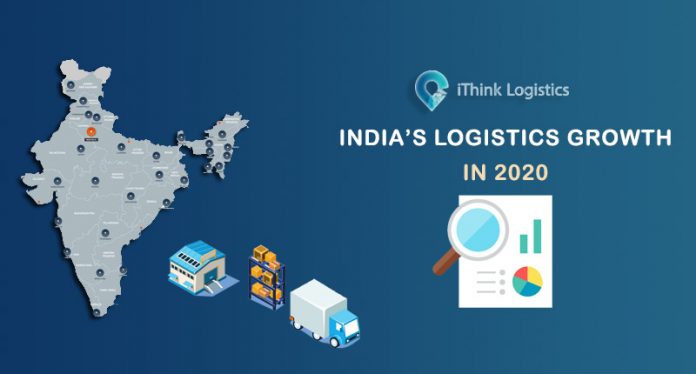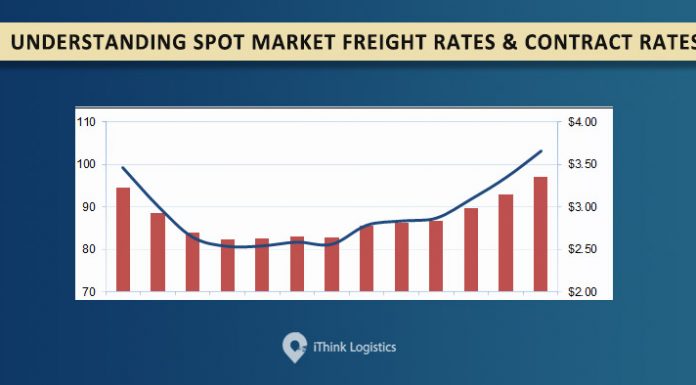As time progresses, the definition of logistics in the industrial world and the global market keeps evolving continuously. The growth rate of logistics in India has shown tremendous improvement in the last decade, starting from scratch and reaching a level where the Indian logistics industry is competing with the top dogs of the most affluent countries. Since there is potential for unlimited improvement, the Indian logistics reports will always highlight areas where improvement could be implemented for better performance in the next year. The key areas for logistics growth in 2020 are as follows.
Logistics Sector In India Overview And Challenges
There is no doubt that the Indian logistics industry is the backbone of our economy. Our world logistics index rankings have come a long way since the beginning of its slow ascent to success. In 2014, the Indian logistics industry ranked 54th globally in the Logistics Performance Index. Moving to 2018, the ranking jumped to 35th and showed a massive improvement in the logistics system. Today, the growth rate of the logistics industry in India is interlinked to every industry and has amalgamated itself with technology, recently emerging service providers and infrastructure. The Indian logistics industry in 2019 is officially the most promising industry along with the quickest growth seen.
Currently, the value of the Indian logistics Industry in 2019 is said to be around $160 Billion and the world anticipates this to grow to at least $250 Billion in the year 2020. This growth can be attributed to the increasing number of e-commerce retailers and their stellar services to the citizens of the country. So, why is logistics growth important? People already rely on e-commerce for their needs and till the year 2020, there will be a huge online-shopping market for the logistics industry to tap into. The entrance of several MNCs into the FMCG sector of the country also creates new avenues of opportunity for the Indian logistics industry to grow. These new and upcoming sectors’ progress has a direct impact on the growth of the Indian logistics industry’s inventory management and effective warehousing solutions for the retail industry.
Several companies from various industries are heavily relying on the Indian logistics industry to help them in serving the customized demands of the customer base. This will help the logistics industry to reach a CAGR of over 7% by the end of the year 2022.
While it is doing substantially well, there are areas that definitely call for a review and improvement. The ideas to improve the logistics industry in India currently revolve around reducing the costs of logistics for customers while providing top-notch services with the given budget is one of the constant challenges the Indian logistics industry faces. Increasing affordability encourages corporates to heavily invest in logistics services through tie-ups or outsourcing help. A lack of proper storage and stockpiling training has also been experienced in the logistics industry. By such companies establishing training and development centers, the industry can create trained professionals meant for the logistics industry rather than employing semi-skilled or skilled labor.
Trained personnel to monitor automatic stockpiling, proper storage and cargo safety will increase the profits since the losses will marginally be cut down. Creating an inventory stock portfolio, stock removal and maintenance system, the Indian logistics industry in 2019 can gain efficiency in cost-cutting for more retained earnings.
Since the warehousing system plays an important role in the manufacturing industry in aspects like global procurement and new models of sales and distribution. Improving the current technology by investing in recent research and development using indigenous and domestic technology will boost the economy by pushing other industries like tech to perform better as well. Making constant changes and upgrades in the operations system of the logistics companies will bring the benefit to the customers since this creates an environment of healthy competition while bringing the best services forward.
In 2020, we expect to see substantial changes and development in these key growth factors for growth of logistics in India.
Infrastructure Development
The Indian Government keeps reaffirming its aim to improve the logistics industry in India by making attempts to modernize the functionality starting with infrastructure development. The administration has introduced key infrastructural development projects to increase access to the untapped rural markets in the country. These projects will focus on bringing more efficiency to the supply chain and improve connectivity issues faced due to the geographical vastness of the country and the different terrains present. We’d think that infrastructural development pilot projects may bring about all the change necessary but there are also other factors. Logistics education, training, and an understanding of the framework are very important for the overall progress of the logistics industry just as hardcore infrastructural development is.
Boost In Policies And Regulations
Revolutionary policies and reforms rolled out by the Indian government such as the Goods and Services Tax (GST), granting of the infra status, and relaxing the FDI policies will play a major role in 2020 with the boost of the Indian logistics industry received. GST changed the face of the way Indian logistics worked. Since then, the logistics industry shifted towards creating logistics with multi-modals and large formats, Industrial centers that can act as goods distribution and aggregation hubs were also encouraged to expand due to the introduction of GST.
The point of advantage GST gave to logistics companies was saving on their organization and capital. Where they had to run several warehouses all over the country that attributed to a huge overall expense in the storage department, they can now use a few but huge capacity warehouses that save them the costs of maintaining multiple warehouses and transportation. This system improved the model of freight and cargo movement that the logistics companies used for transportation from manufacturing units to the warehouses, wholesale market, retail market and the points of sale. The growth of the e-commerce industry and the FMCG industry’s expansive policies.
This will help logistics companies increase the amount of load they carry in single trips, the way they move goods from small manufacturing units in order to save on transportation costs while keeping a great service quality for customer satisfaction.
The Advantage Of Adopting The Latest Technology
The advent of technology in the logistics industry has spelled loads of progress in the operations and various systems. Technology such as artificial intelligence, machine learning and the internet of things are meant to move the foundations of traditional and old-school logistics operations in the country.
Though it may take some time, it shows promising results to make better improvements in productivity than any other means while streamlining the operations systems of the Indian logistics sector. When such modern technology can replace a system that is prone to error, we expect great things to happen.
The backbone of the economy will turn stronger and in return strengthen the other sectors of the industries. Even though many might debate that adopting these technological advancements is expensive, it is in the best interest of the logistics industry to integrate their organization with them before the gap between their current and the future technology becomes vast.
That will backfire their attempts to cost-cut and increase their expenditures at least three-fold. Integrating such technology calls for initial investments like installation, test runs and training the personnel to run these programs, but once completely set up, the companies will experience a new world of streamlined processes that the older technology could never compete with. In 2020, technology will make space for logistics industries to make space to handle bigger clients because of powerful management tools.
The Future Perspective
Looking at the big picture, on the global level, Indian logistics as an industry has come a long way and is expected to keep a significant upturn in performance on the world’s platform. Companies and International Corporations joining hands with the various logistics companies of India will create a mutually beneficial relationship by reducing their logistics costs, increasing transportation abilities for the customers while bringing much-needed income to make the logistics industry the biggest industry of the country.
In the future, we can expect specialized operations for logistics and delivery to be in high demand from clients of all walks. Be it technological spare parts, automobile equipment or food delivery, everyone will soon bank on the efficiency of a streamlined logistics industry to fulfill all the transportation, storage and delivery needs of all industries. The advancement of e-commerce will soon reach a new high, resulting in more opportunities for the logistics industry to make a mark on express deliveries and round the clock services apart from the company’s in-house logistics system.
Conclusion
While the Indian logistics industry was once considered to be a service provider, now it is classified as an end to end solutions provider for multiple sectors of the industrial realm. In 2020, the worth of the logistics industry will expand to roughly $250 Billion due to the key areas bringing a substantial improvement to operations and overall management. Apart from improving global rankings, it is safe to say that anticipating the Indian logistics industry to become the dominant industry in the country.









